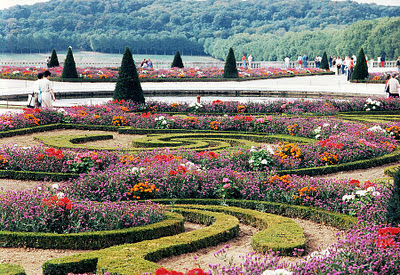In 2001, the Swiss-based New7Wonders Foundation conducted an international poll to update the Seven Wonders of the Ancient World. After more than 100 million votes and international campaigns, the finalists were announced on July 7th, 2007. From Mexico to India, the new wonders represented the magnificent man-made marvels of the modern day.

Chichen Itza, Mexico
With a name meaning “At the mouth of the well of Itza”, Chichen Itza is the ruins of a Mayan civilization, dating back to about 600 AD. It served as a political and economic center and housed magnificent buildings including, temples (including Temple of Warriors and Temple of Chac Mool), the Hall of the Thousand Pillars and the last Mayan temple, the pyramid of Kulkulkan. The site fell into disrepair over the centuries through various invasions, looting and abandonment.



Christ the Redeemer, Brazil
The iconic statue of Jesus Christ, standing atop Corcovado Mountain that overlooks Rio de Janeiro, is the symbol of peace, warmth and welcoming nature of the Brazilian people. It was designed by Heitor da Silva Costa, sculpted by French artist Paul Landowski and completed in 1931 after five years of construction.



The Colosseum, Italy
The mother of all sports stadiums, the Colosseum in Rome was built between 70 and 82 AD. At its height, the amphitheater could seat up to 50,000 spectators, who enjoyed various public spectacles including the infamous gladiator fights, animal hunts, executions and dramas. The site was partially ruined after an earthquake, but still stands today as a testament to the prowess of Imperial Rome.



Great Wall of China, China
The 4,000 mile brick wall was erected to fortify the northern borders of the Chinese Empire against Mongol invasion. Construction first began in 8th century BC and the majority was completed during the Ming Dynasty between 1368 and 1644 AD.



Machu Picchu, Peru
One of the lost cities of the world, Machu Picchu is an awe-inspiring ruin of the Inca civilization. Check out our previous post on panaromic views from the top of Machu Picchu



Petra, Jordan
Another lost city of the world, Petra dates back to the 6th century BC, when it was the capital city of the Nabataens, the masters of water technology. The stone-cut architecture, which survived centuries, makes it one of the most fascinating and beautiful sites in the world.



Taj Mahal, India
The majestic Taj Mahal in Agra is the most epic display of love in history. Emperor Shah Jahan built the marble mausoleum in 1630 AD to honor the memory of his deceased wife. After its construction, legends insist the architect responsible for the design had his hands cut off so that he couldn’t create anything similar ever again. The Taj Mahal is considered the best representation of Muslim art in India.


 Gardening is today a hobby of most of the people that love gardens and are close to the nature.They love nature.Gardening is the growing and cultivation of plants an it is the part of horticulture that is known as the art of gardening . A gardener is the man who practice gardening or they are professionally a gardener. It is considered to be a great activity for a lot of people.Gardening ranges in scale from fruit orchards to long planting and with different types of shrubs,trees and herbaceous plants.Gardening may be very specialized.It involve an active participation in the growing of plants.
Gardening is today a hobby of most of the people that love gardens and are close to the nature.They love nature.Gardening is the growing and cultivation of plants an it is the part of horticulture that is known as the art of gardening . A gardener is the man who practice gardening or they are professionally a gardener. It is considered to be a great activity for a lot of people.Gardening ranges in scale from fruit orchards to long planting and with different types of shrubs,trees and herbaceous plants.Gardening may be very specialized.It involve an active participation in the growing of plants.










